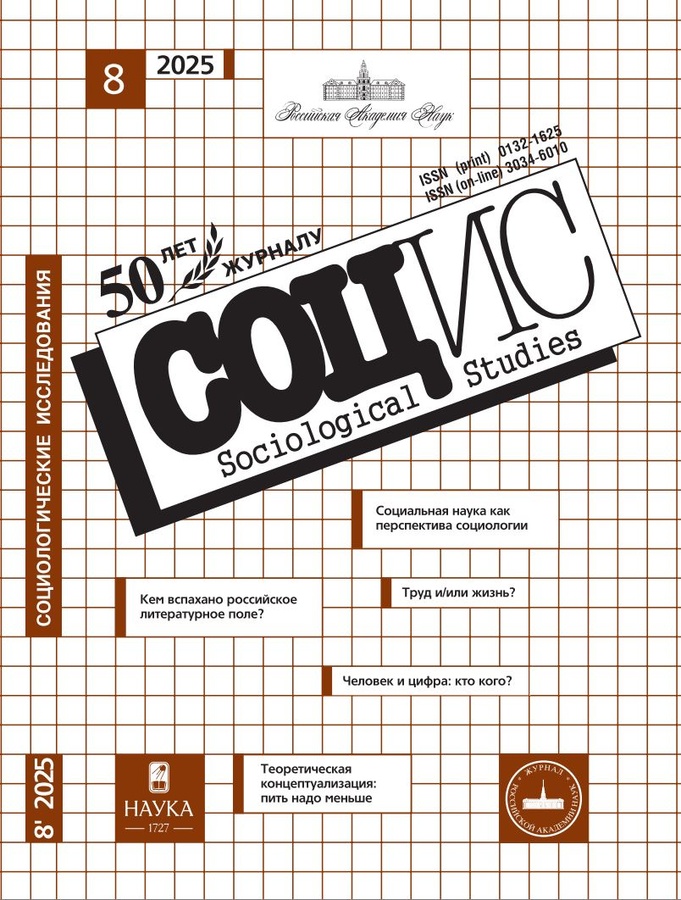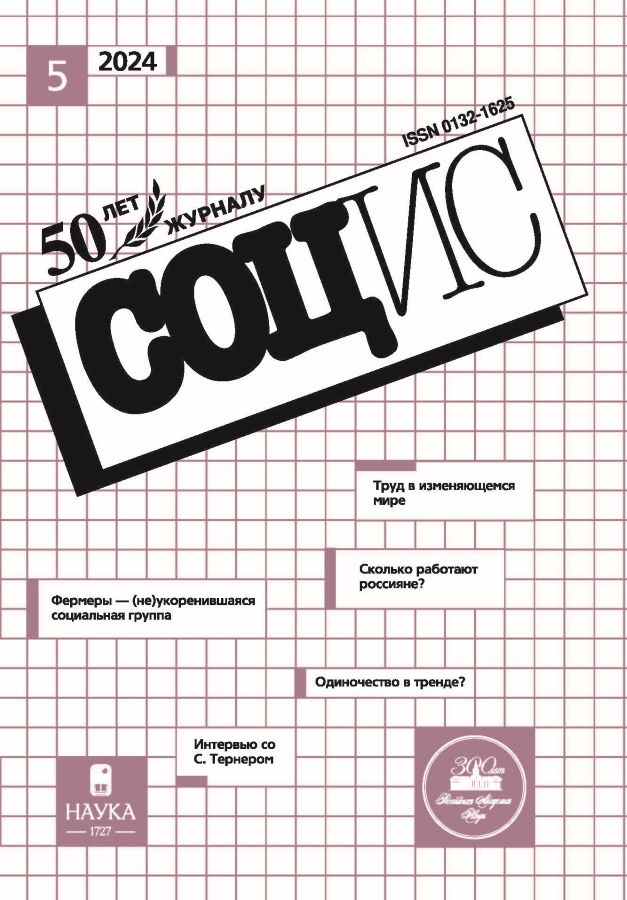Динамика продолжительности рабочего времени в постсоветский период
- Авторы: Козырева П.М.1,2, Низамова А.Э.1,2, Смирнов А.И.1
-
Учреждения:
- ФНИСЦ РАН
- НИУ «Высшая школа экономики»
- Выпуск: № 5 (2024)
- Страницы: 27-38
- Раздел: ЭКОНОМИЧЕСКАЯ СОЦИОЛОГИЯ. СОЦИОЛОГИЯ ТРУДА
- URL: https://cijournal.ru/0132-1625/article/view/673808
- DOI: https://doi.org/10.31857/S0132162524050021
- ID: 673808
Цитировать
Полный текст
Аннотация
На основе данных «Российского мониторинга экономического положения и здоровья населения НИУ ВШЭ (RLMS-HSE)» осуществлен анализ изменений в продолжительности рабочего времени в постсоветский России (1994–2021). Показано, что если в 1990-х гг. каждый третий работник трудился, не превышая установленную продолжительность рабочего времени, то сегодня только каждый пятый, а остальные вынуждены постоянно перерабатывать. Вместе с тем при росте показателей продолжительности оплачиваемой работы отмечено заметное сокращение времени на передвижение на работу и обратно, а также доли этих затрат в общем объеме рабочего времени. Выявлена заметная дифференциация работников по уровню трудовой нагрузки, что, в свою очередь, становится одной из веских причин роста дифференциации в размере заработной платы. Анализируя ситуацию, сложившуюся в экономике, авторы прогнозируют сохранение высоких показателей продолжительности рабочего времени в ближайшей перспективе, что повышает угрозу эмоционального истощения и физической усталости работников.
Ключевые слова
Полный текст
Об авторах
Полина Михайловна Козырева
ФНИСЦ РАН; НИУ «Высшая школа экономики»
Автор, ответственный за переписку.
Email: pkozyreva@isras.ru
доктор социологических наук, первый заместитель директора Институт социологии, заведующая Центром лонгитюдных обследований Института социальной политики
Россия, Москва; МоскваАлфия Энварьевна Низамова
ФНИСЦ РАН; НИУ «Высшая школа экономики»
Email: anizamova@hse.ru
кандидат социологических наук, старший научный сотрудник Института социологии, главный эксперт Центра лонгитюдных обследований Института социальной политики
Россия, Москва; МоскваАлександр Ильич Смирнов
ФНИСЦ РАН
Email: smir_al@bk.ru
доктор социологических наук, ведущий научный сотрудник Института социологии
Россия, МоскваСписок литературы
- Артемов В. А., Новохацкая О. В. Использование времени и социальное самочувствие: опыт экспериментального анализа // Социологические исследования. 2011. № 2. С. 24–31.
- Бобков В. Н., Вередюк О. В. Часы работы в России: модели занятости и факторы выбора // Экономические и социальные перемены: факты, тенденции, прогноз. 2019. Т 12. № 5. С. 109–123. DOI: 10.15838/ esc.2019.5.65.7
- Большакова О. А., Караханова Т. М. Повседневная деятельность городских жителей: адаптационное структурирование, время ресурса и справедливость в возможностях // Россия реформирующаяся: ежегодник: вып. 20 / Отв. ред. М. К. Горшков; ФНИСЦ РАН. М.: Новый Хронограф, 2022. С. 525–550. doi: 10.19181/ezheg.2022.20
- Вишневская Н. Т., Гимпельсон В. Е., Монусова Г. А. Динамика рабочего времени: сравнительный анализ // Мировая экономика и международные отношения. 2001. № 2. С. 61–72. doi: 10.20542/0131-2227-2001-2-61-72
- Зайкова И. А. Динамика продолжительности рабочего времени в Российской Федерации // Инновации и инвестиции. 2020. № 6. С. 272–276.
- Заработная плата в России: эволюция и дифференциация / Под ред. В. Е. Гимпельсона, Р. И. Капелюшникова. М.: ГУ ВШЭ, 2007.
- Золотов А. В. Об исследованиях закономерного характера, факторов, эффектов и перспектив динамики рабочего времени в современной экономике // Народонаселение. 2020. Т. 23. № 3. С. 155–168. doi: 10.19181/population.2020.23.3.14
- Капелюшников Р. И. Российский рынок труда: статистический портрет на фоне кризисов: препринт WP3/2023/02. М.: ВШЭ, 2023.
- Караханова Т. М. Повседневная деятельность горожан в показателях бюджета времени (1965–2004 гг.) // Социологические исследования. 2006. № 9. С. 41–51.
- Караханова Т. М., Большакова О. А. Бюджет времени рабочих как отражение их реального поведения в повседневной жизни (1965–2014 гг.) // Вестник Института социологии. 2016. № 3 (18). С. 70–96. doi: 10.19181/vis.2016.18.3.413
- Карачаровский В. В., Гурулева М. Н. Ловушка мотивации на российском рынке труда // Социологические исследования. 2023. № 8. С. 34–46. doi: 10.31857/S013216250027365-4
- Колесникова О. А., Стребков А. А. Расширение практики применения дистанционной занятости: проблемы, решения, перспективы // Социально-трудовые исследования. 2020. № 4 (41). С. 57–67. doi: 10.34022/2658-3712-2020-41-4-57-67
- Кузьмин А. И. Влияние демографических факторов на бюджет времени работающего и незанятого населения России // Вестник УГУЭС. Наука, образование, экономика. Сер.: Экономика. 2013. № 4 (6). С. 38–46.
- Патрушев В. Д. Динамика использования бюджетов времени городским и сельским населением // Социологические исследования. 2005. № 8. С. 34–43.
- Патрушев В. Д. Труд и досуг рабочих (бюджет времени, ценности и мотивы). М.: ИС РАН, 2006.
- Повседневная деятельность городских жителей в годы реформ: бюджет времени, ценности, тенденции (1986–2008) / Под общ. ред. Т. М. Карахановой. М.: ИС РАН, 2010.
- Рабочая сила, занятость и безработица в России (по результатам выборочных обследований рабочей силы). 2022. M.: Росстат, 2022.
- OECD. Hours worked (indicator), 2023. doi: 10.1787/47be1c78-en (дата обращения: 01.10.2023).
Дополнительные файлы












